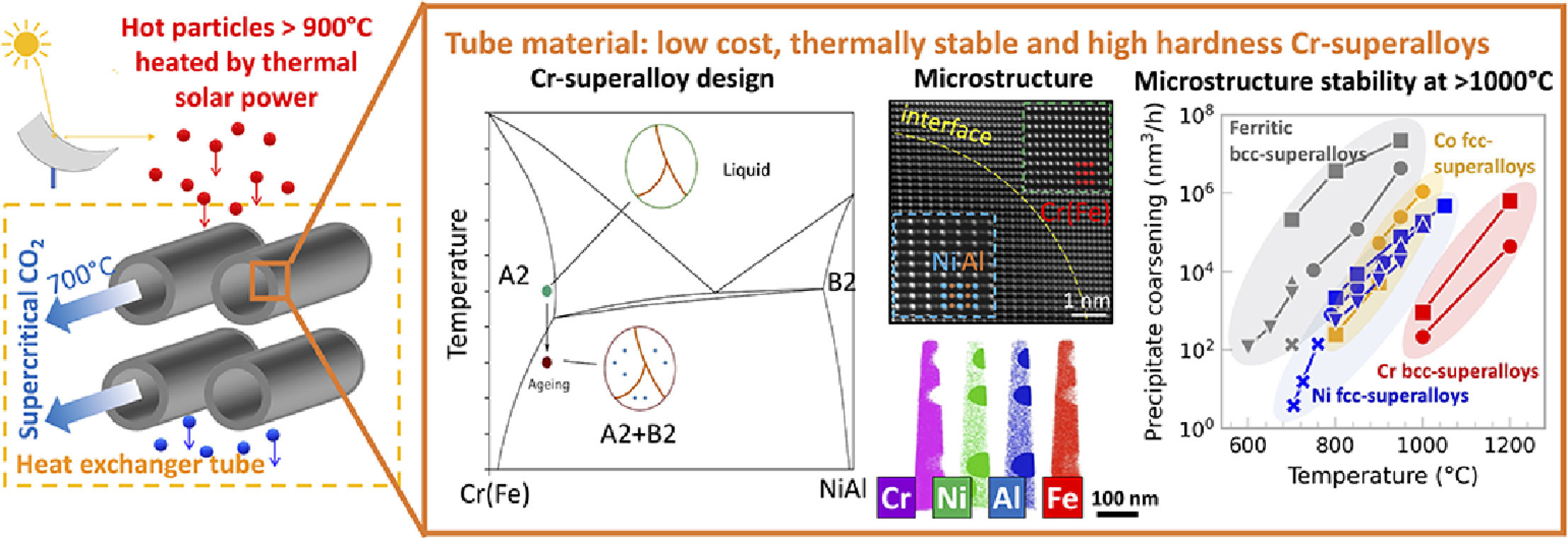K. Ma, T. Blackburn, J.P. Magnussen, M. Kerbstadt, P.A. Ferreirós, T. Pinomaa, C. Hofer, D.G. Hopkinson, S.J. Day e, P.A.J. Bagot, M.P. Moody, M.C. Galetz, A.J. Knowles
Acta Materialia 257 (2023), 119183, DOI: 10.1016/j.actamat.2023.119183

Chromium alloys are being considered for next-generation concentrated solar power applications operating > 800 °C. Cr offers advantages in melting point, cost, and oxidation resistance. However, improvements in mechanical performance are needed. Here, Cr-based body-centred-cubic (bcc) alloys of the type Cr(Fe)-NiAl are investigated, leading to ‘bcc-superalloys’ comprising a bcc-Cr(Fe) matrix (β) strengthened by ordered-bcc NiAl intermetallic precipitates (β’), with iron additions to tailor the precipitate volume fraction and mechanical properties at high temperatures. Computational design using CALculation of PHAse Diagram (CALPHAD) predicts that Fe increases the solubility of Ni and Al, increasing precipitate volume fraction, which is validated experimentally. Nano-scale, highly-coherent B2-NiAl precipitates with lattice misfit ∼ 0.1% are formed in the Cr(Fe) matrix. The Cr(Fe)-NiAl A2-B2 alloys show remarkably low coarsening rate (∼102 nm3/h at 1000 °C), outperforming ferritic-superalloys, cobalt- and nickel-based superalloys. Low interfacial energies of ∼ 40/20 mJ/m2 at 1000/1200 °C are determined based on the coarsening kinetics. The low coarsening rates are principally attributed to the low solubility of Ni and Al in the Cr matrix. The alloys show high compressive yield strength of ∼320 MPa at 1000 °C. The Fe-modified alloy exhibits resistance to age softening, related to the low coarsening rate as well as the relatively stable Orowan strengthening as a function of precipitate radius. Microstructure tailoring with Fe additions offers a new design route to improve the balance of properties in “Cr-superalloys”, accelerating their development as a new class of high-temperature materials.